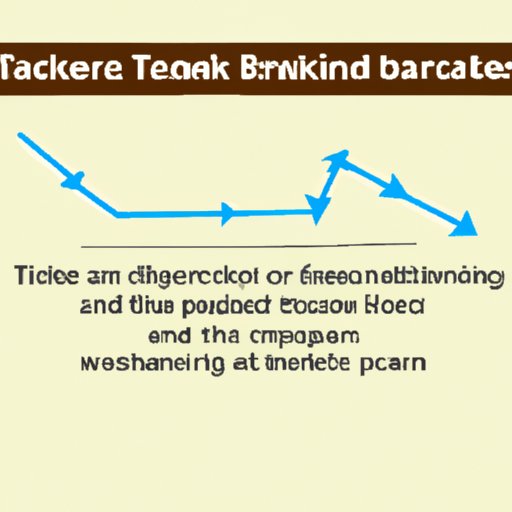
Introduction
Water breaking is a natural part of the childbirth process, and expectant parents need to understand the science behind it to make informed decisions. When your water breaks, it signals the beginning of labor and delivery, and there are several different factors that can impact the timing of birth. In this article, we will explore the science, facts, and myths behind childbirth, and provide helpful tips and advice on how to navigate this exciting but uncertain time.
The Science Behind Water Breaking and Its Correlation with Labor
Water breaking is also known as rupturing the membranes, and it happens when the sac of amniotic fluid surrounding your baby ruptures. This fluid surrounds and cushions your baby, and it plays an important role in the development of your baby’s lungs, digestive system, and immune system. When you are close to giving birth, the sac may rupture on its own, or your healthcare provider may choose to rupture it intentionally.
Water breaking is an important sign of labor, and it usually happens during the active phase of labor. The active phase is the second stage of labor, and it is characterized by regular contractions and cervical dilation. Before the active phase, you may experience Braxton-Hicks contractions or false labor. False labor is characterized by contractions that do not get longer, stronger, and closer together over time, whereas true labor is characterized by progressive contractions.
There are three main stages of labor: the first stage, the second stage, and the third stage. The first stage is when the cervix dilates or opens, and it is divided into latent and active phases. The latent phase is the early phase of labor, and it is characterized by irregular contractions and cervical effacement or thinning. The active phase is the later phase of labor, and it is characterized by regular contractions and cervical dilation. The second stage is when your baby is born, and the third stage is when the placenta is delivered.
The Role of Healthcare Providers in Determining the Timing of Delivery After the Waters Break
When your water breaks, it is essential to seek medical attention, but the timing of delivery depends on several different factors. These factors include the gestational age of your baby, the presence of meconium or fetal distress, the progress of labor, and the absence of contractions.
In general, if you are full-term, and there is no meconium or fetal distress present, it is safe to wait for up to 24 hours after your water breaks before considering medical intervention. However, if you are preterm or there is meconium or fetal distress present, immediate medical attention is required. Your healthcare provider will monitor your contractions, your baby’s heart rate, and your cervical dilation to determine the timing of delivery.
It is important to listen to your healthcare provider during this time and to communicate any concerns or questions you may have. Your healthcare provider will guide you through this process and make sure that you and your baby are safe and healthy.
The Importance of Staying Calm and Prepared After Water Breaking
When your water breaks, it is normal to feel a range of emotions, including excitement, fear, and uncertainty. However, it is important to stay calm and prepared during this time to ensure a safe and successful delivery. It is also important to seek support from your partner, family, friends, or healthcare provider.
You should also stay prepared for the next steps in childbirth, such as packing your hospital bag, arranging for childcare, and preparing for postpartum recovery. This will help you feel more in control and less anxious during this uncertain time.

How to Track the Length of Time Between Water Breaking and Delivery
Tracking time is an essential part of managing labor and delivery, and it can help you make informed decisions about medical intervention and pain management. After your water breaks, you should record the time, the color and odor of the fluid, and any other symptoms you may experience, such as contractions, bleeding, or fever.
You should also monitor the length of time between water breaking and delivery and communicate this information to your healthcare provider. Your healthcare provider will use this information to determine the timing of delivery and to make sure that you and your baby are safe and healthy.
Debunking Common Myths About Water Breaking and Childbirth
There are several common myths about water breaking and childbirth, and it is important to challenge them with accurate and reliable information.
One of the most common myths is that water breaking always happens at the onset of labor, but in reality, it can happen at any time during labor and delivery. Another common myth is that water breaking always results in an immediate and dramatic increase in contractions, but in reality, the onset and intensity of contractions can vary from person to person.
It is important to seek accurate and reliable information about childbirth and to ask your healthcare provider any questions you may have.
Preparing for Delivery After Water Breaking
Finally, it is important to stay prepared and informed during delivery after water breaking. You should expect more frequent cervical exams, monitoring of your baby’s heart rate, and closer attention to the timing of delivery.
You should also stay prepared for unexpected changes in your birth plan, such as the need for medical intervention or pain management. Your healthcare provider will guide you through this process and make sure that you and your baby are safe and healthy.
Conclusion
In conclusion, water breaking is a natural part of the childbirth process, but it can be an uncertain and emotional time for expectant parents. Understanding the science, facts, and myths behind childbirth can help you make informed decisions and manage your emotions during this time. It is important to seek support from your healthcare provider, partner, family, and friends, and to stay calm, prepared, and informed throughout the delivery process. Remember that every birth is unique, and every experience is valid.





